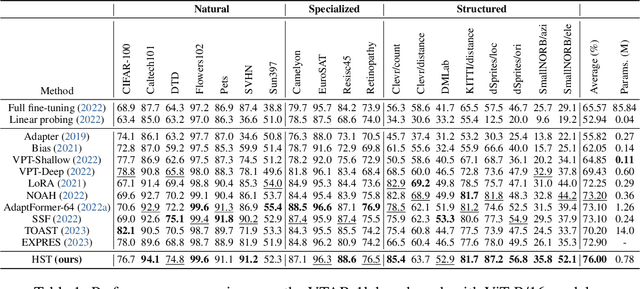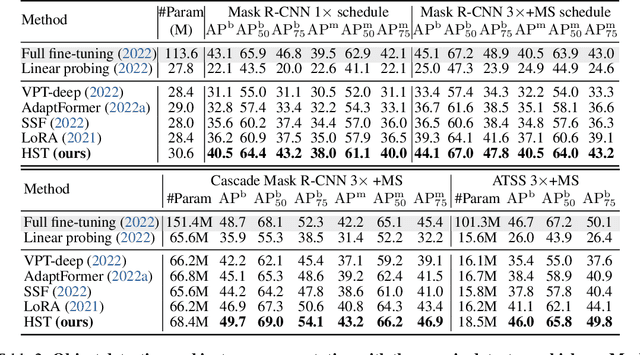Weifeng Lin
IMAGINE-E: Image Generation Intelligence Evaluation of State-of-the-art Text-to-Image Models
Jan 23, 2025



Abstract:With the rapid development of diffusion models, text-to-image(T2I) models have made significant progress, showcasing impressive abilities in prompt following and image generation. Recently launched models such as FLUX.1 and Ideogram2.0, along with others like Dall-E3 and Stable Diffusion 3, have demonstrated exceptional performance across various complex tasks, raising questions about whether T2I models are moving towards general-purpose applicability. Beyond traditional image generation, these models exhibit capabilities across a range of fields, including controllable generation, image editing, video, audio, 3D, and motion generation, as well as computer vision tasks like semantic segmentation and depth estimation. However, current evaluation frameworks are insufficient to comprehensively assess these models' performance across expanding domains. To thoroughly evaluate these models, we developed the IMAGINE-E and tested six prominent models: FLUX.1, Ideogram2.0, Midjourney, Dall-E3, Stable Diffusion 3, and Jimeng. Our evaluation is divided into five key domains: structured output generation, realism, and physical consistency, specific domain generation, challenging scenario generation, and multi-style creation tasks. This comprehensive assessment highlights each model's strengths and limitations, particularly the outstanding performance of FLUX.1 and Ideogram2.0 in structured and specific domain tasks, underscoring the expanding applications and potential of T2I models as foundational AI tools. This study provides valuable insights into the current state and future trajectory of T2I models as they evolve towards general-purpose usability. Evaluation scripts will be released at https://github.com/jylei16/Imagine-e.
Lumina-mGPT: Illuminate Flexible Photorealistic Text-to-Image Generation with Multimodal Generative Pretraining
Aug 05, 2024Abstract:We present Lumina-mGPT, a family of multimodal autoregressive models capable of various vision and language tasks, particularly excelling in generating flexible photorealistic images from text descriptions. Unlike existing autoregressive image generation approaches, Lumina-mGPT employs a pretrained decoder-only transformer as a unified framework for modeling multimodal token sequences. Our key insight is that a simple decoder-only transformer with multimodal Generative PreTraining (mGPT), utilizing the next-token prediction objective on massive interleaved text-image sequences, can learn broad and general multimodal capabilities, thereby illuminating photorealistic text-to-image generation. Building on these pretrained models, we propose Flexible Progressive Supervised Finetuning (FP-SFT) on high-quality image-text pairs to fully unlock their potential for high-aesthetic image synthesis at any resolution while maintaining their general multimodal capabilities. Furthermore, we introduce Ominiponent Supervised Finetuning (Omni-SFT), transforming Lumina-mGPT into a foundation model that seamlessly achieves omnipotent task unification. The resulting model demonstrates versatile multimodal capabilities, including visual generation tasks like flexible text-to-image generation and controllable generation, visual recognition tasks like segmentation and depth estimation, and vision-language tasks like multiturn visual question answering. Additionally, we analyze the differences and similarities between diffusion-based and autoregressive methods in a direct comparison.
Draw-and-Understand: Leveraging Visual Prompts to Enable MLLMs to Comprehend What You Want
Apr 01, 2024



Abstract:The interaction between humans and artificial intelligence (AI) is a crucial factor that reflects the effectiveness of multimodal large language models (MLLMs). However, current MLLMs primarily focus on image-level comprehension and limit interaction to textual instructions, thereby constraining their flexibility in usage and depth of response. In this paper, we introduce the Draw-and-Understand project: a new model, a multi-domain dataset, and a challenging benchmark for visual prompting. Specifically, we propose SPHINX-V, a new end-to-end trained Multimodal Large Language Model (MLLM) that connects a vision encoder, a visual prompt encoder and an LLM for various visual prompts (points, bounding boxes, and free-form shape) and language understanding. To advance visual prompting research for MLLMs, we introduce MDVP-Data and MDVP-Bench. MDVP-Data features a multi-domain dataset containing 1.6M unique image-visual prompt-text instruction-following samples, including natural images, document images, OCR images, mobile screenshots, web screenshots, and multi-panel images. Furthermore, we present MDVP-Bench, a comprehensive and challenging benchmark to assess a model's capability in understanding visual prompting instructions. Our experiments demonstrate SPHINX-V's impressive multimodal interaction capabilities through visual prompting, revealing significant improvements in detailed pixel-level description and question-answering abilities.
SPHINX-X: Scaling Data and Parameters for a Family of Multi-modal Large Language Models
Feb 08, 2024Abstract:We propose SPHINX-X, an extensive Multimodality Large Language Model (MLLM) series developed upon SPHINX. To improve the architecture and training efficiency, we modify the SPHINX framework by removing redundant visual encoders, bypassing fully-padded sub-images with skip tokens, and simplifying multi-stage training into a one-stage all-in-one paradigm. To fully unleash the potential of MLLMs, we assemble a comprehensive multi-domain and multimodal dataset covering publicly available resources in language, vision, and vision-language tasks. We further enrich this collection with our curated OCR intensive and Set-of-Mark datasets, extending the diversity and generality. By training over different base LLMs including TinyLlama1.1B, InternLM2-7B, LLaMA2-13B, and Mixtral8x7B, we obtain a spectrum of MLLMs that vary in parameter size and multilingual capabilities. Comprehensive benchmarking reveals a strong correlation between the multi-modal performance with the data and parameter scales. Code and models are released at https://github.com/Alpha-VLLM/LLaMA2-Accessory
Hierarchical Side-Tuning for Vision Transformers
Oct 10, 2023



Abstract:Fine-tuning pre-trained Vision Transformers (ViT) has consistently demonstrated promising performance in the realm of visual recognition. However, adapting large pre-trained models to various tasks poses a significant challenge. This challenge arises from the need for each model to undergo an independent and comprehensive fine-tuning process, leading to substantial computational and memory demands. While recent advancements in Parameter-efficient Transfer Learning (PETL) have demonstrated their ability to achieve superior performance compared to full fine-tuning with a smaller subset of parameter updates, they tend to overlook dense prediction tasks such as object detection and segmentation. In this paper, we introduce Hierarchical Side-Tuning (HST), a novel PETL approach that enables ViT transfer to various downstream tasks effectively. Diverging from existing methods that exclusively fine-tune parameters within input spaces or certain modules connected to the backbone, we tune a lightweight and hierarchical side network (HSN) that leverages intermediate activations extracted from the backbone and generates multi-scale features to make predictions. To validate HST, we conducted extensive experiments encompassing diverse visual tasks, including classification, object detection, instance segmentation, and semantic segmentation. Notably, our method achieves state-of-the-art average Top-1 accuracy of 76.0% on VTAB-1k, all while fine-tuning a mere 0.78M parameters. When applied to object detection tasks on COCO testdev benchmark, HST even surpasses full fine-tuning and obtains better performance with 49.7 box AP and 43.2 mask AP using Cascade Mask R-CNN.
Scale-Aware Modulation Meet Transformer
Jul 26, 2023



Abstract:This paper presents a new vision Transformer, Scale-Aware Modulation Transformer (SMT), that can handle various downstream tasks efficiently by combining the convolutional network and vision Transformer. The proposed Scale-Aware Modulation (SAM) in the SMT includes two primary novel designs. Firstly, we introduce the Multi-Head Mixed Convolution (MHMC) module, which can capture multi-scale features and expand the receptive field. Secondly, we propose the Scale-Aware Aggregation (SAA) module, which is lightweight but effective, enabling information fusion across different heads. By leveraging these two modules, convolutional modulation is further enhanced. Furthermore, in contrast to prior works that utilized modulations throughout all stages to build an attention-free network, we propose an Evolutionary Hybrid Network (EHN), which can effectively simulate the shift from capturing local to global dependencies as the network becomes deeper, resulting in superior performance. Extensive experiments demonstrate that SMT significantly outperforms existing state-of-the-art models across a wide range of visual tasks. Specifically, SMT with 11.5M / 2.4GFLOPs and 32M / 7.7GFLOPs can achieve 82.2% and 84.3% top-1 accuracy on ImageNet-1K, respectively. After pretrained on ImageNet-22K in 224^2 resolution, it attains 87.1% and 88.1% top-1 accuracy when finetuned with resolution 224^2 and 384^2, respectively. For object detection with Mask R-CNN, the SMT base trained with 1x and 3x schedule outperforms the Swin Transformer counterpart by 4.2 and 1.3 mAP on COCO, respectively. For semantic segmentation with UPerNet, the SMT base test at single- and multi-scale surpasses Swin by 2.0 and 1.1 mIoU respectively on the ADE20K.
 Add to Chrome
Add to Chrome Add to Firefox
Add to Firefox Add to Edge
Add to Edge